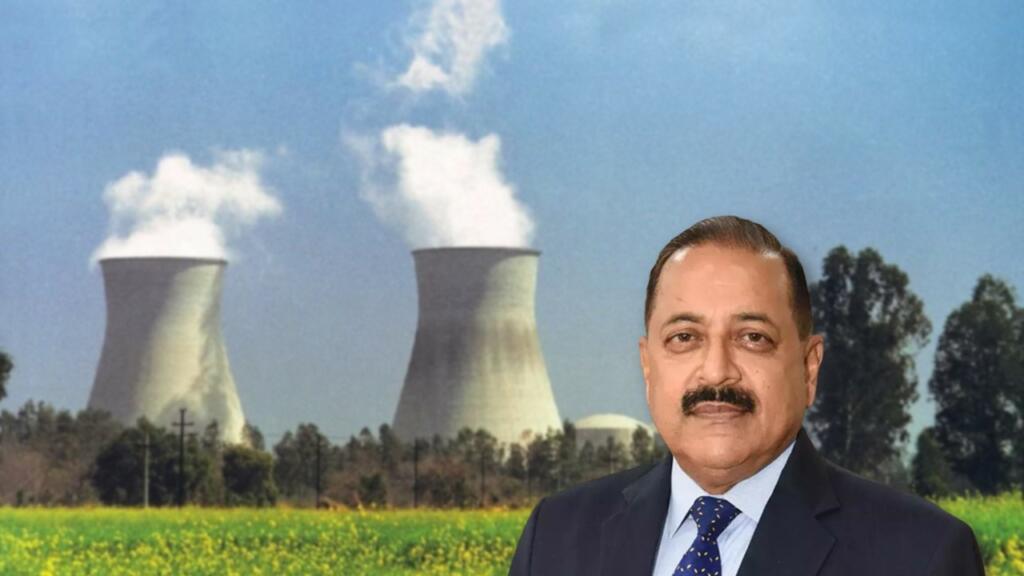New nuclear reactors India: Energy and power play a crucial role in the development of nations, and in today’s world, the importance of nuclear power is rapidly increasing, especially with countries fiercely competing against each other. India has now tripled its nuclear power capacity, showcasing its commitment to this vital source of energy.
India approved nuclear reactors
Recently, the Atomic Energy Minister, Dr. Jitendra Singh, informed about the Centre approving the installation of 10 nuclear reactors in 5 states across India. “The government has roped in PSUs for the installation of the nuclear reactors, or the exercise would be done exclusively by the specialised government agencies”, the minister said.
The approval includes 10 indigenous pressurised heavy water reactors of 700 MW each in fleet mode. Additionally, the 10 reactors will come online in Karnataka, Haryana, Madhya Pradesh, and Rajasthan. Two nuclear reactors will each be installed in Kaiga, Chutka, and Gorakhpur nuclear power plants, while the Mahi Banswara nuclear power plant in Rajasthan will get four nuclear reactors.
Also read: Operation Tarkash: India-US Joint Exercise to tackle Nuclear and Biological Threats
Dr. Jitendra Singh emphasised India’s enhanced power, saying, “The present installed nuclear power capacity is set to increase from 6780 MW to 22480 MW by 2031 on the progressive completion of projects under construction and accorded sanction. The government has also accorded ‘in principle’ approval for new sites to set up nuclear reactors in the future.”
Constant building of nuclear capacity
Noticeably, during a Rajya Sabha speech, the minister stated that India’s nuclear power capacity rose significantly after 2014. Since the chairing of Prime Minister Narendra Modi, the country has developed its nuclear capabilities, giving tough competition to all the alleged superpowers of the world.
Looking at the statistics, after China and the US, India is the third-largest consumer of energy. It has 22 reactors with a combined operating capacity of 6780 MW. The government announced in 2021 that the nuclear power generation capacity will reach 22,480 MWe (megawatts of electric) by 2031.
Also read: Nuclear power takes off: India’s rise to energy dominance under Modi Government
While the production of solar and wind energy has significantly increased in India during the past few years, in light of the rising population, Nuclear energy is proving to be a long-term solution for India’s energy requirements. Despite the fact that India’s share of nuclear electricity has remained constant, more attempts are now being made to advance alternative energy.
Countries trying to compete
Now, the question arises: is it only India that is emphasising nuclear capacity? Looking at the contemporary world, the answer is no. Currently, nuclear energy is produced by the majority of EU countries. France has the most operable nuclear reactors, followed by Belgium and Spain. By creating 70 percent of its electricity through technology, France became the most pro-nuclear nation in Europe, considering the changed attitude of the European members.
Moreover, as reported by TFI, Belgium decided to go back on its plan to phase out nuclear power by 2025. With Russia’s invasion of Ukraine, the country extended the green light for two reactors for an additional ten years. As Belgium develops renewable energy sources, such as wind farms and solar fields, the energy created will help the country avoid its dependence on Russian gas.
Also read: India throws an open challenge to West, facilitate nuclear shipment
On the other hand, there has been a significant uptick in the building of nuclear power capacity. Even the Netherlands announced the construction of two new nuclear reactors to bolster its solar, wind, and water resources for electricity, following Britain’s announcement of its nuclear power development.
Additionally, nuclear energy already accounts for 20 percent of US electricity, producing nearly 50 percent of the nation’s carbon-free energy. According to statistics, 55 nuclear power stations in the United States at the end of 2021 were home to 93 commercial nuclear reactors that were in operation and had a combined generation capacity of around 95,492 MW.
India’s nuclear upsurge
It is pertinent to note that this is not a new phenomenon in Indian development. Rather, it’s just an advancement of the long-planned ambitions of the world’s fifth-largest economy. As per Statista, during the financial year 2021, the amount of nuclear electricity generated across India reached around 43 terawatt hours. The country is the third-largest producer as well as consumer of electricity in the world, with a national electric grid of approximately 382 gigawatts of installed generation capacity.
Also read: Nuclear fusion is the future
In 2022, 11 nuclear power reactors were under construction in India, for a total of 8.7 gigawatts of electric capacity. India planned to complete the construction of these 11 nuclear reactors before 2030. The new nuclear reactors being built with the largest energy capacity were Kudankulam 3 & 4 and 5 & 6, both with a capacity of two gigawatts.
This makes it imperative to believe that India has developed a progressive approach to making the dragon and its allies die down and to giving a befitting reply to those who believed India to be a country of freebooters and rogues. It’s high time for the world to realise that India is capable enough to make East and West taste the dirt, even after being the preacher of peace and harmony.
Support TFI:
Support us to strengthen the ‘Right’ ideology of cultural nationalism by purchasing the best quality garments from TFI-STORE.COM
